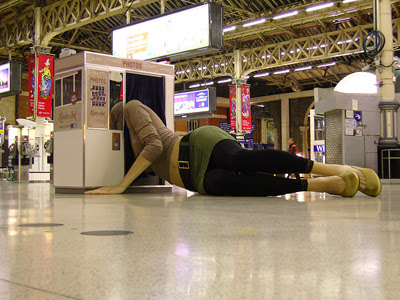

This Giant installation in a London train station, created by UK ad agency Mother to promote a reality television show about a tattoo parlour owned by UK tattoo artist Louis Molloy, who is famous for inking David Beckham and Kate Moss.
The sculptures’ tattoos were designed by Molloy - instead of a rampant eagle, common in traditional tattooing, she has a tatty looking 'flying rat' - the ubiquitous London pigeon as her 'tramp stamp'.
It interests me that the advertiser will be stencilling London city with promos. They should take care with that approach. In the U.S. Sony embarked on a similar campaign idea - paying grafitti artists to paint iconic images of kids using the PSP. The reaction from bona fide street artists was swift and hostile. According to Wired:Sony Draws Ire With PSP Graffiti
"Outside Casa Maria, a small Mission bodega, someone wrote, "Get out of my city," added the word "Fony" to the graffiti..."
I don't think Banksy would approve.

Via Creative Review Blog
With the number of ads and brands we see everyday, I think this is a great way to generate buzz and advertise the show.
ReplyDeleteMuch of what we know about today travels through word of mouth, or should I say, word of mouse ;)